Use our BMI Calculator to measure your body mass index. Track your health, monitor weight, and maintain a balanced lifestyle effectively.
BMI Calculator
Your Comprehensive Health Report
Basic Information
Age:
Gender:
Height:
Weight:
BMI Results
BMI:
Category:
Ideal Weight Range:
Energy & Metabolism
BMR: calories/day
TDEE: calories/day
Body Composition
Body Fat %:
Waist-to-Hip Ratio:
WHR Category:
Health Insights
Recommendations
Body Mass Index (BMI) is a widely used screening tool that helps assess whether a person has a healthy body weight in relation to their height. While not a diagnostic measure, BMI provides a quick snapshot of potential health risks associated with weight. Our comprehensive guide explains what BMI means, how to calculate it, and offers an interactive calculator to find your own BMI value.
| BMI Range | Classification | Health Risk |
| Below 18.5 | Underweight | Increased risk for nutritional deficiencies and osteoporosis |
| 18.5 - 24.9 | Normal weight | Lowest risk for weight-related health problems |
| 25.0 - 29.9 | Overweight | Increased risk for heart disease and diabetes |
| 30.0 - 34.9 | Obesity (Class I) | High risk for weight-related health problems |
| 35.0 - 39.9 | Obesity (Class II) | Very high risk for serious health conditions |
| 40.0 and above | Obesity (Class III) | Extremely high risk for severe health problems |
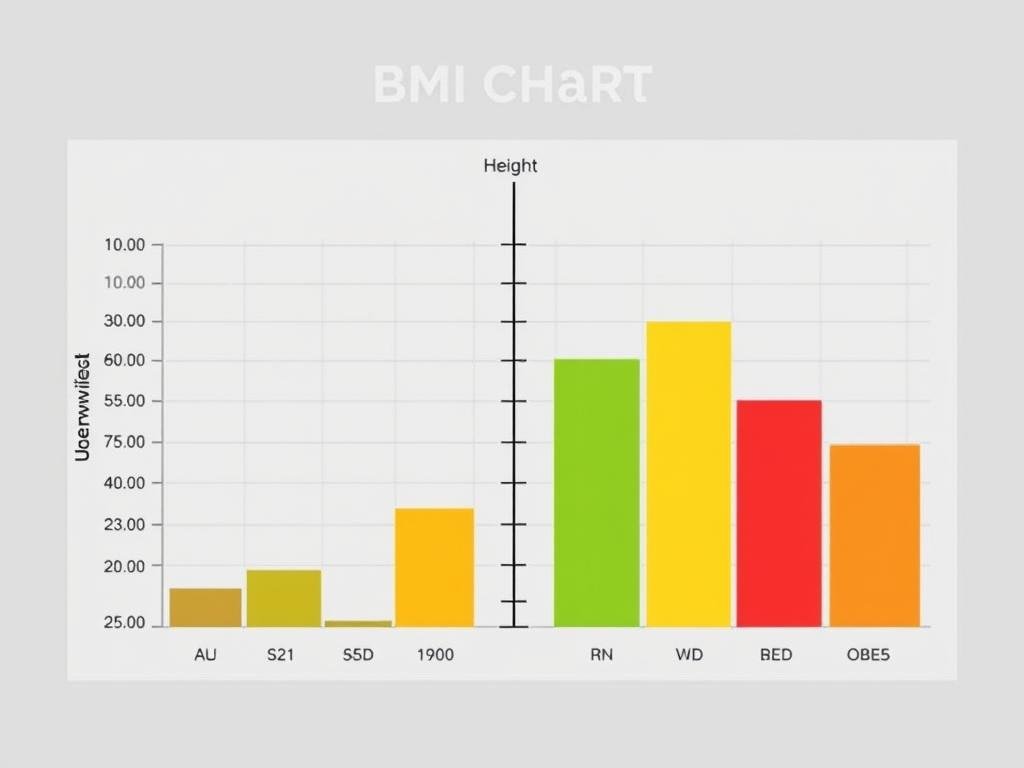
What Is BMI and How Is It Calculated?
Body Mass Index is a calculation that uses your height and weight to estimate how much body fat you have. While it doesn't directly measure body fat, it provides a reasonable indicator for most people and helps healthcare providers quickly assess potential weight-related health risks.
BMI Formula (Metric Units)
BMI = weight (kg) ÷ height² (m²)
Example: For a person weighing 70 kg and standing 1.75 m tall:
BMI = 70 ÷ (1.75 × 1.75) = 70 ÷ 3.0625 = 22.9
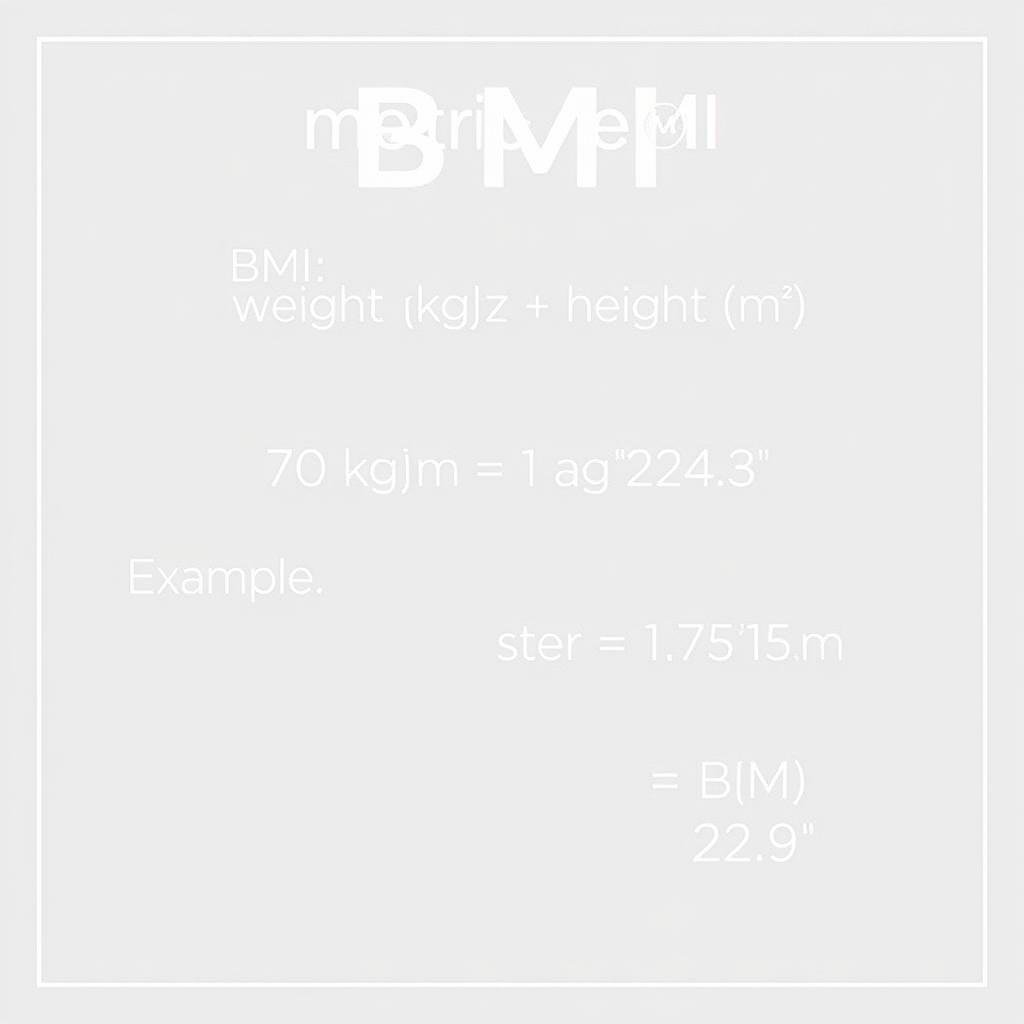
BMI Formula (Imperial Units)
BMI = 703 × weight (lbs) ÷ height² (inches²)
Example: For a person weighing 154 lbs and standing 5'9" (69 inches) tall:
BMI = 703 × 154 ÷ (69 × 69) = 108,262 ÷ 4,761 = 22.7
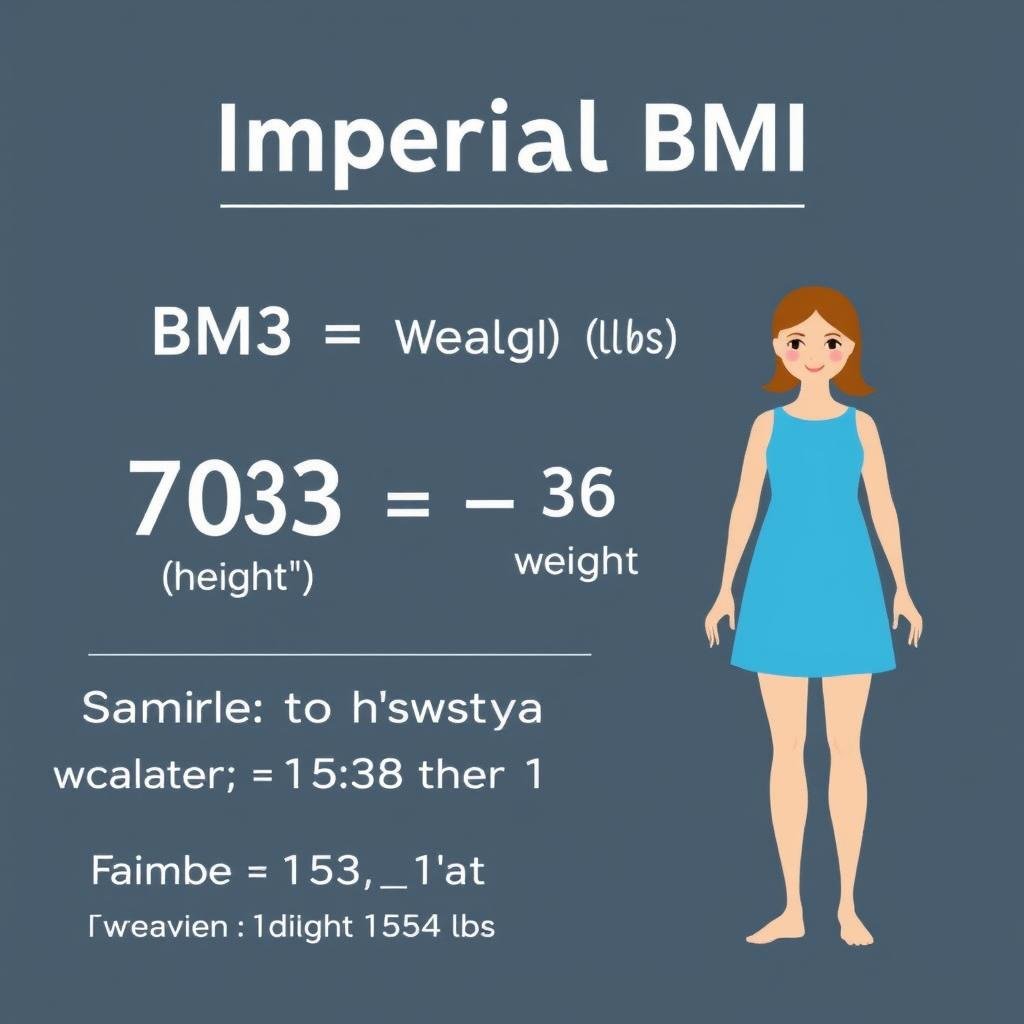
How to Use an Online BMI Calculator
- Select your preferred unit system (metric or imperial)
- Enter your height accurately (in feet/inches or centimeters)
- Enter your weight (in pounds or kilograms)
- Click the "Calculate" button to get your BMI result
- Review your BMI classification based on standard categories
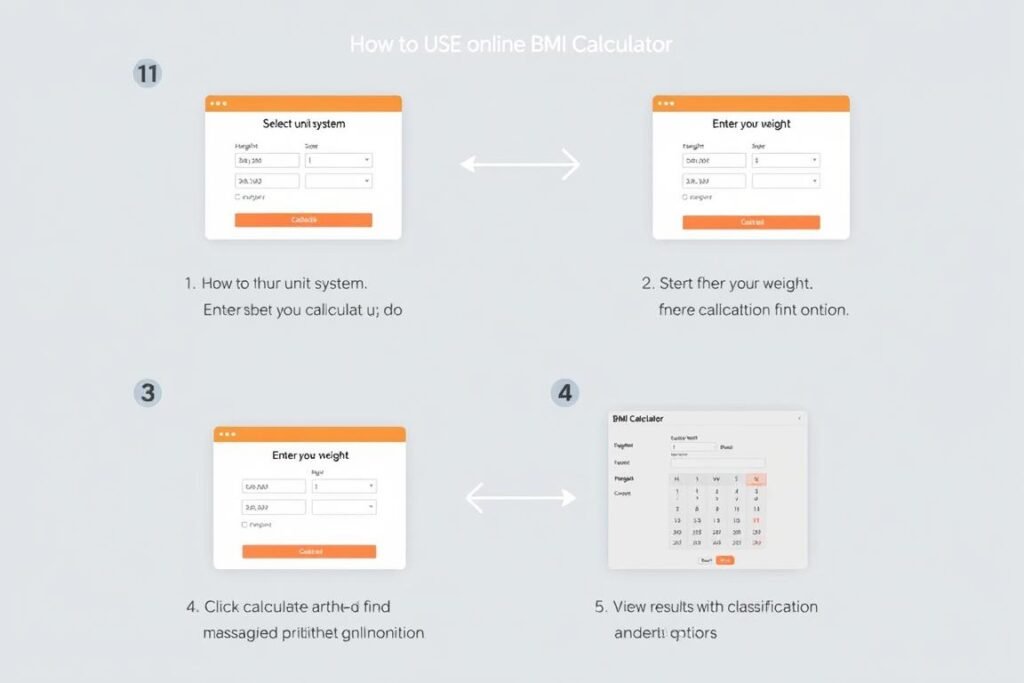
Understanding Your BMI Results
Once you've calculated your BMI, it's important to understand what the number means. The World Health Organization (WHO) has established standard BMI classifications that help interpret your result.
BMI Classifications for Adults
These classifications apply to adults aged 20 and older, regardless of gender:
Underweight
- BMI below 18.5
- May indicate malnutrition
- Possible immune system issues
- Risk of nutritional deficiencies
- Potential hormonal imbalances
Normal Weight
- BMI 18.5 to 24.9
- Generally healthy range
- Lower risk of weight-related diseases
- Optimal range for most adults
- Focus on maintaining through healthy habits
Overweight
- BMI 25.0 to 29.9
- Increased health risks
- Higher chance of developing diabetes
- Elevated risk of heart disease
- May benefit from lifestyle changes
Obesity
- BMI 30.0 and above
- Class I: 30.0-34.9
- Class II: 35.0-39.9
- Class III: 40.0 and above
- Significant health risks
BMI for Children and Teens
For children and adolescents (ages 2-19), BMI is calculated the same way as for adults, but the interpretation is different. Instead of fixed categories, children's BMI is compared to percentiles based on age and sex.
| Percentile Range | Weight Status Category |
| Below 5th percentile | Underweight |
| 5th to less than 85th percentile | Healthy weight |
| 85th to less than 95th percentile | Overweight |
| 95th percentile or greater | Obesity |
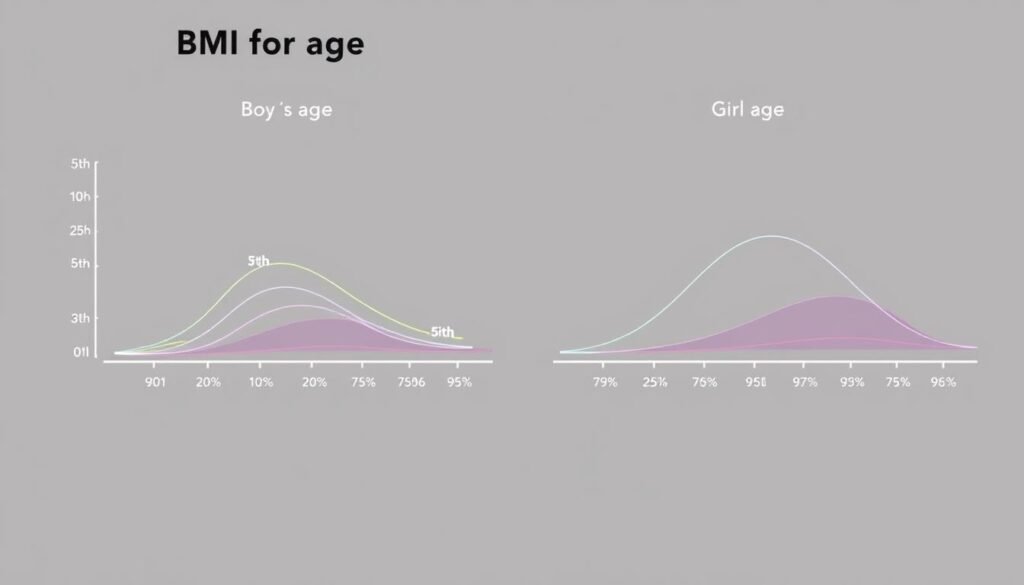
Limitations of BMI as a Health Measure
While BMI is a useful screening tool, it has several important limitations that should be considered when interpreting your results.
Advantages of BMI
- Quick and easy to calculate
- No specialized equipment needed
- Consistent measurement standard
- Good population-level screening tool
- Correlates with body fat for most people
Limitations of BMI
- Doesn't distinguish between fat, muscle, and bone mass
- May overestimate body fat in athletes and muscular individuals
- May underestimate body fat in older adults with less muscle mass
- Doesn't account for fat distribution (central vs. peripheral)
- Not always accurate for pregnant women, children, or certain ethnic groups
"BMI is a useful screening tool, but it's just one factor in evaluating health. A comprehensive assessment should include other measurements and consider individual circumstances."
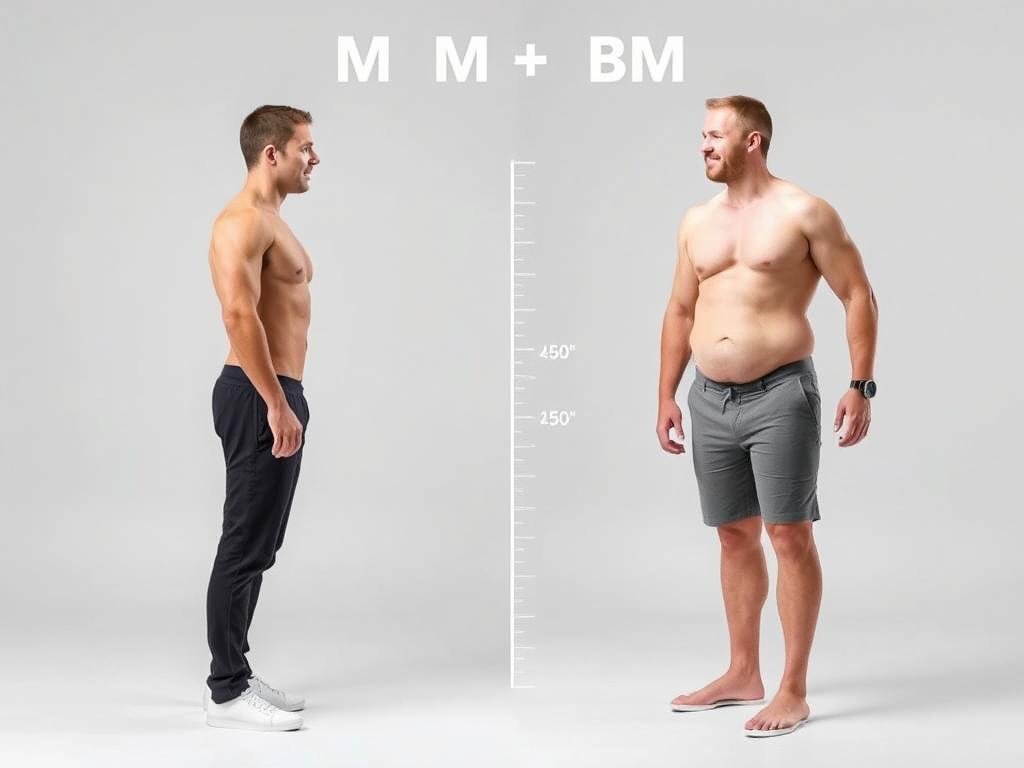
Alternative Health Measurements
Due to BMI's limitations, health professionals often recommend using additional measurements for a more complete picture of health.
Waist Circumference
Measures abdominal fat, which is linked to higher health risks. Health risks increase with waist measurements above 35 inches (88 cm) for women and 40 inches (102 cm) for men.

Body Fat Percentage
Directly measures the proportion of fat in your body. Can be measured using skinfold calipers, bioelectrical impedance, DEXA scans, or other methods.

Waist-to-Hip Ratio
Compares waist circumference to hip circumference. Ratios above 0.85 for women and 0.9 for men indicate increased health risks.
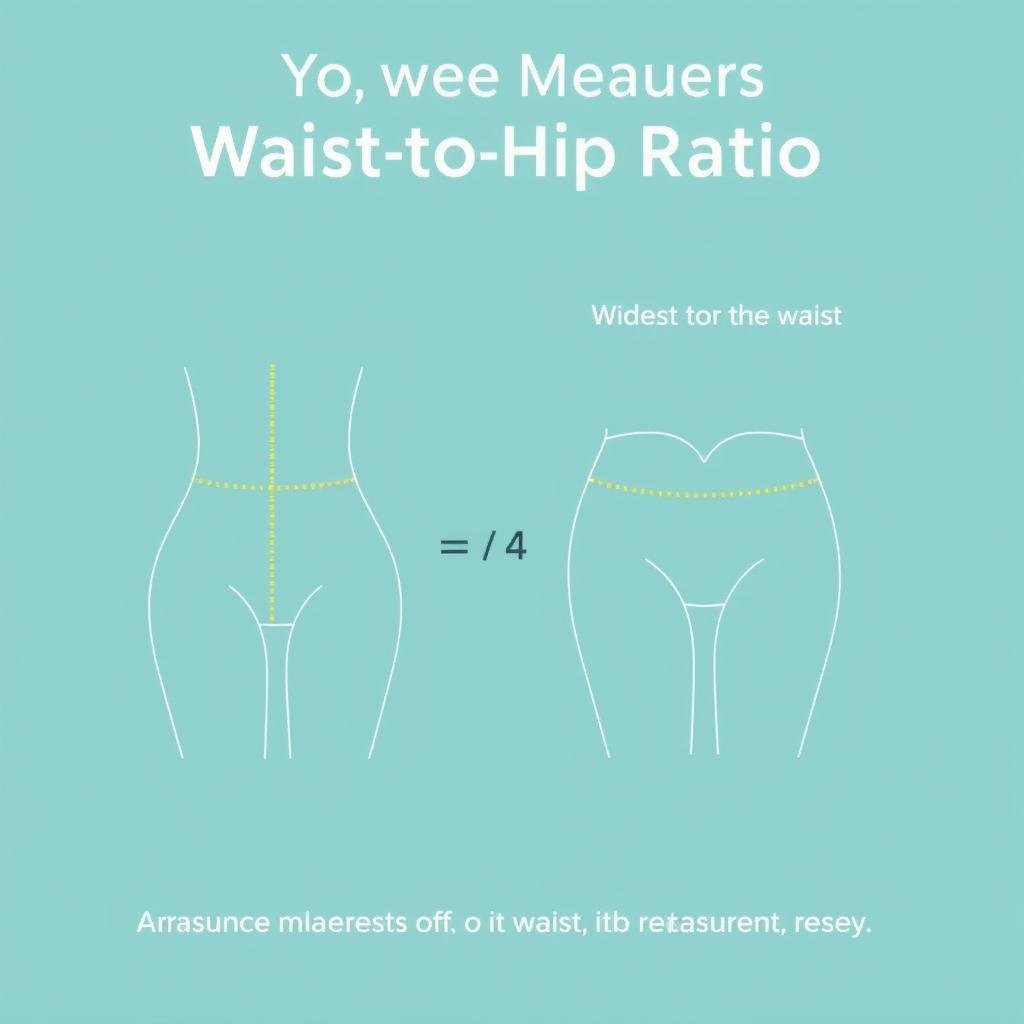
Need More Accurate Body Composition Analysis?
While BMI provides a useful starting point, consider consulting with a healthcare provider for more comprehensive health assessments tailored to your individual needs.

Tips for Maintaining a Healthy BMI
If your BMI indicates that you may benefit from weight management, consider these evidence-based strategies:
Nutrition Tips
- Focus on whole foods like fruits, vegetables, lean proteins, and whole grains
- Control portion sizes using smaller plates and mindful eating
- Limit processed foods, added sugars, and saturated fats
- Stay hydrated by drinking water instead of sugary beverages
- Practice mindful eating by paying attention to hunger and fullness cues

Physical Activity Tips
- Aim for at least 150 minutes of moderate aerobic activity weekly
- Include strength training exercises at least twice per week
- Find activities you enjoy to make exercise sustainable
- Incorporate movement throughout your day (take stairs, walk more)
- Gradually increase intensity and duration as fitness improves

Remember: Small, sustainable changes are more effective than drastic measures. Focus on developing healthy habits rather than quick fixes.

Frequently Asked Questions About BMI
Is BMI accurate for everyone?
No, BMI has limitations. It may not be accurate for athletes, older adults, pregnant women, or certain ethnic groups. It doesn't distinguish between fat, muscle, and bone mass. For a more comprehensive health assessment, consider additional measurements and consult with a healthcare provider.
How often should I check my BMI?
For most adults, checking BMI once or twice a year is sufficient unless you're actively working on weight management. More frequent monitoring may be recommended if you're following a specific health plan under professional guidance.
Can I have a normal BMI but still be unhealthy?
Yes. BMI doesn't measure overall health, just weight relative to height. Some people with normal BMI may have unhealthy fat distribution, poor cardiovascular fitness, or metabolic issues. Conversely, some people with slightly elevated BMI may be perfectly healthy based on other metrics.
Is BMI calculated differently for men and women?
The BMI formula is the same for both men and women. However, body composition typically differs between sexes, with women naturally having higher body fat percentages than men. This is one reason why BMI should be considered alongside other health measurements.
What should I do if my BMI indicates I'm overweight or obese?
If your BMI falls outside the normal range, consider consulting with a healthcare provider for personalized advice. They can help determine if weight management would benefit your health and guide you in developing a sustainable plan that includes balanced nutrition and regular physical activity.

Conclusion: The Role of BMI in Health Monitoring
Body Mass Index serves as a valuable initial screening tool for weight-related health risks. While it provides a quick and accessible way to assess whether your weight falls within a healthy range for your height, it's important to remember that BMI is just one piece of the health puzzle.
For a comprehensive understanding of your health status, consider BMI alongside other measurements like waist circumference, body composition, physical fitness, metabolic health markers, and overall lifestyle factors. Always consult with healthcare professionals for personalized health advice based on your unique circumstances.
Take the Next Step in Your Health Journey
Use our BMI calculator as a starting point, then explore our other health resources to develop a well-rounded approach to wellness.
